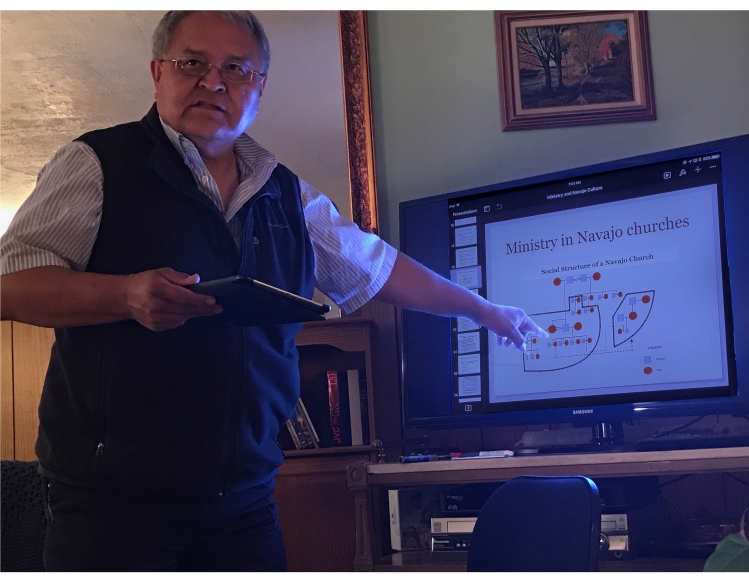 In Diné culture there is something called k’é [friendship, or peace]. When we looked the word up in our Navajo Lexicon it sounds a lot like the Hebrew concept of shalom [completeness, soundness, peace] mixed with the Greek concept of koinōnía [close relationship]. Simply put, it is a system of kinship, but it is so intricate and deeply woven into who they are, that when asked, a Navajo may not fully explain it though, subconsciously, he still thinks and acts in terms of the conscept. Dr. Yazzie has studied how the Gospel moves in the Navajo culture through k’é. A Navajo understands that a critical part of k’é is restoring peace, harmony and balance of life through relations. Having this mindset can create avenues for the Gospel to spread.
In Diné culture there is something called k’é [friendship, or peace]. When we looked the word up in our Navajo Lexicon it sounds a lot like the Hebrew concept of shalom [completeness, soundness, peace] mixed with the Greek concept of koinōnía [close relationship]. Simply put, it is a system of kinship, but it is so intricate and deeply woven into who they are, that when asked, a Navajo may not fully explain it though, subconsciously, he still thinks and acts in terms of the conscept. Dr. Yazzie has studied how the Gospel moves in the Navajo culture through k’é. A Navajo understands that a critical part of k’é is restoring peace, harmony and balance of life through relations. Having this mindset can create avenues for the Gospel to spread.

Cultures have many layers. Some have compared cultures to onions. However, because of its importance to the Navajo culture, Dr Yazzie uses the various layers of corn to illustrate the external, relational, traditional and foundational layers in the Diné culture.

The relational layer shows up in the people’s behavior, and how they relate and communicate socially. One example of this is how a Navajo introduces themselves. In order to really know someone and connect with them they introduce themselves by their four clans. When they share this with one another they automatically know how they are related (even if a person seems to be only distantly related to another, from a western European perspective, if their clans connect, they’re related) and thus traditional introductions inform Navajo how to address one another, whether they should use the Diné term for “uncle,” “younger-brother,” “grandfather,” etc… or just “friend.”
The traditional layer manifests itself in Diné customs, values, and norms. Their traditional teachings and ceremonies come from this layer. When our daughter Zoe was a couple months old, people started asking us if we were going to have a “First Laugh” party for her. This custom was something we never would have known about if it wasn’t for having a baby on the mission field.
In Dr. Yazzie’s corn model the foundational layer of Diné culture is their worldview. How a Navajo thinks and views the world is the core of who they are. What they believe and the meta-narratives they live by lie deep in their culture.
The external layer consists of the most visible aspects of their culture like what they wear, eat and live in. This has been shifting in the Navajo culture. Today there is such diversity among Diné that, externally, some of the more traditional members of the culture still live in a hooghan nimazin [hogan/circular home similar to a yurt], wearing kéłchí [moccasins] etc….
…while much of the younger generation might live in a house with four walls and wear skinny jeans. Instances of that younger generation meet at our house for Bible studies on Thursday night.



